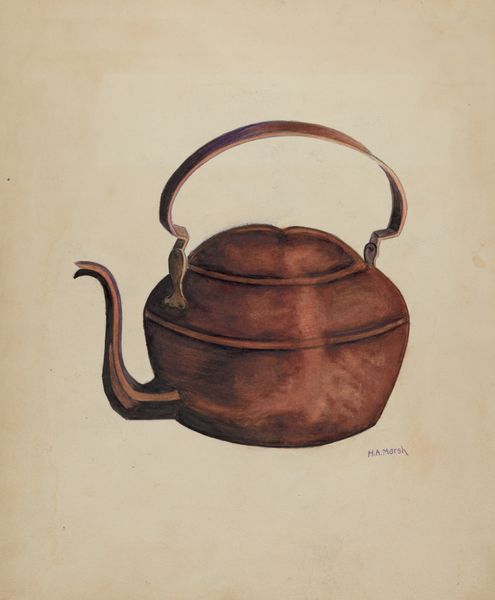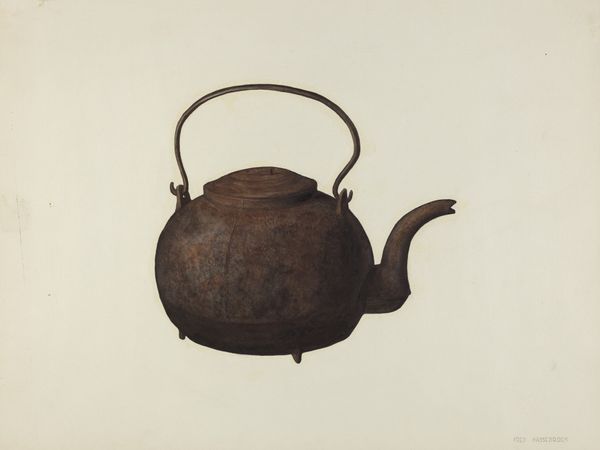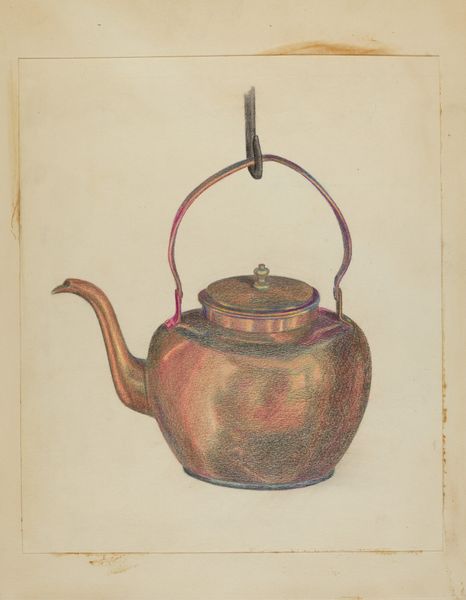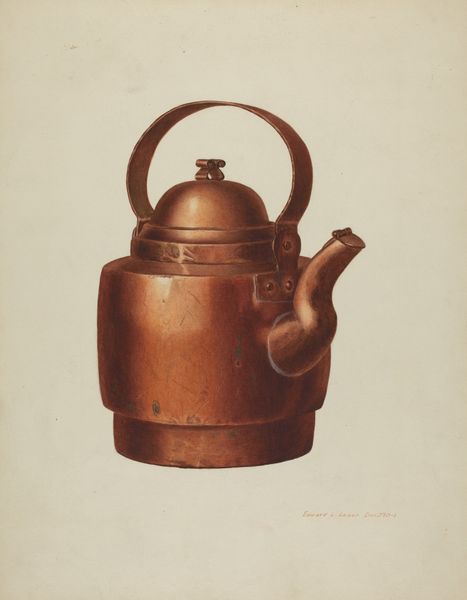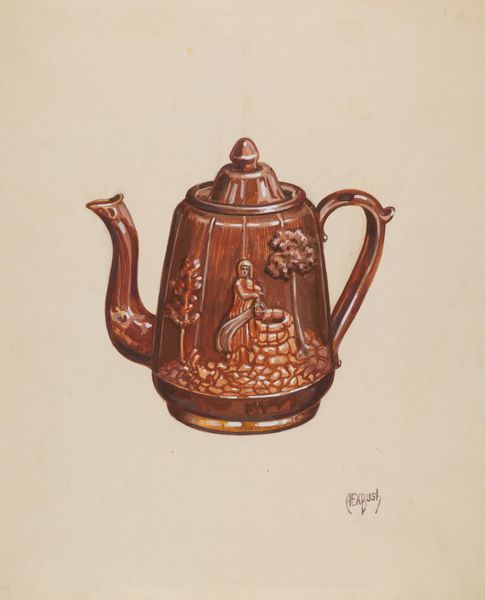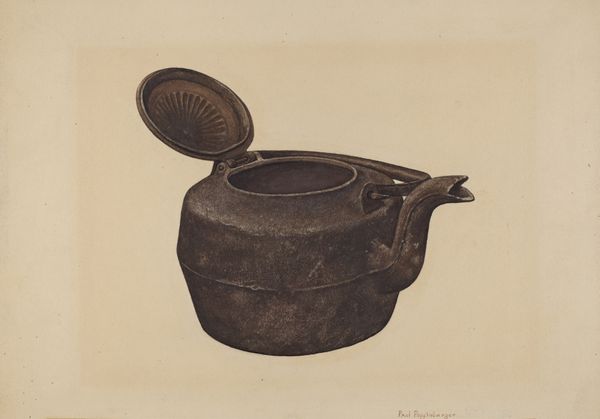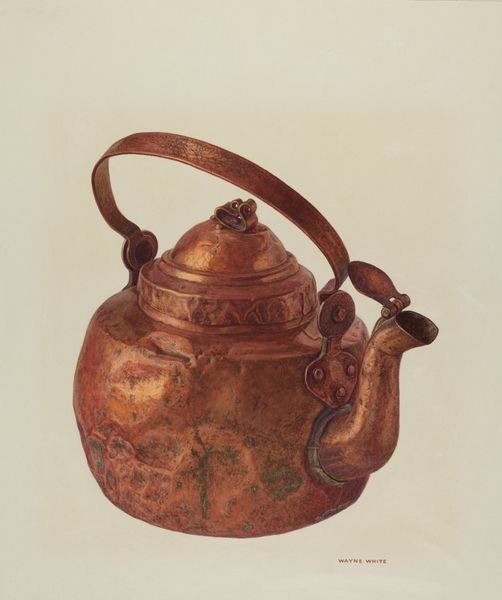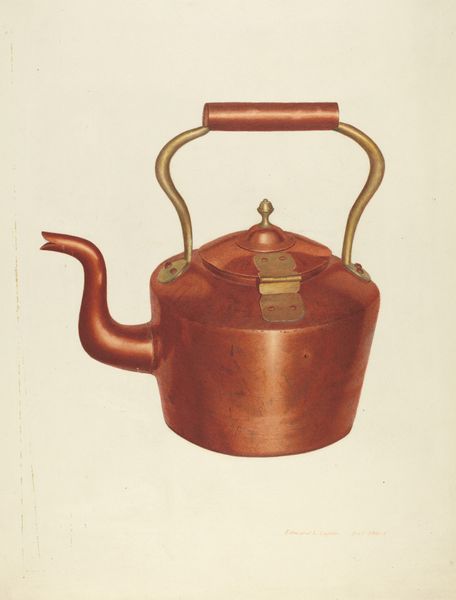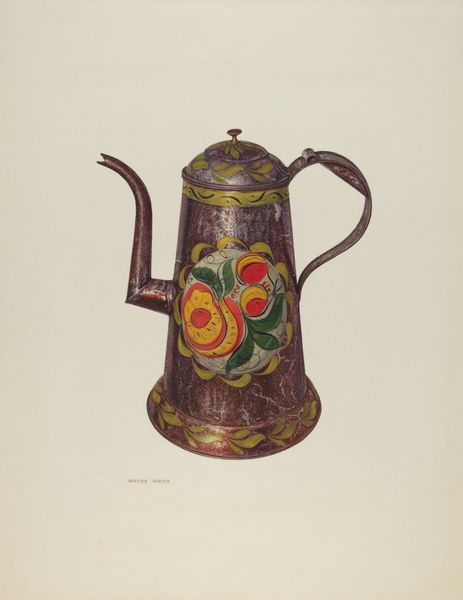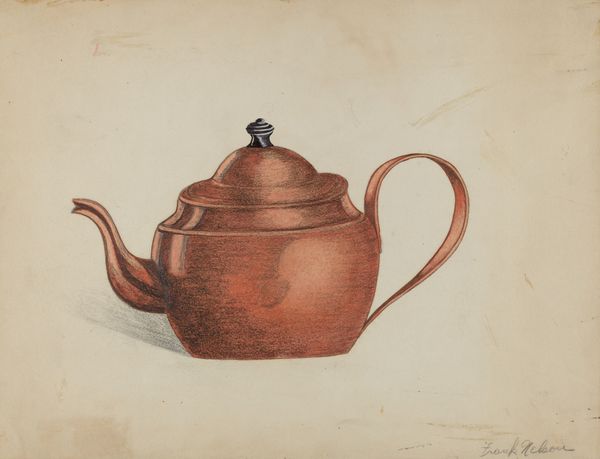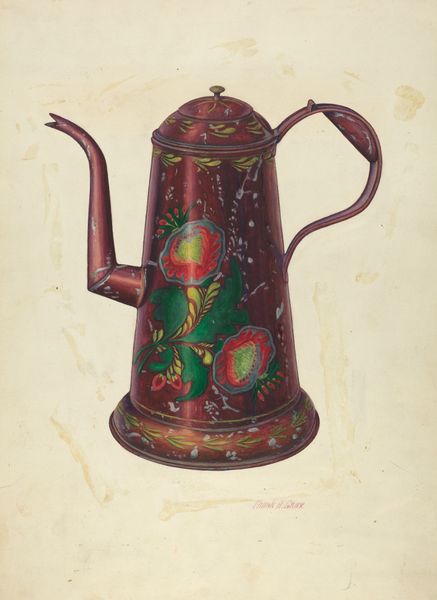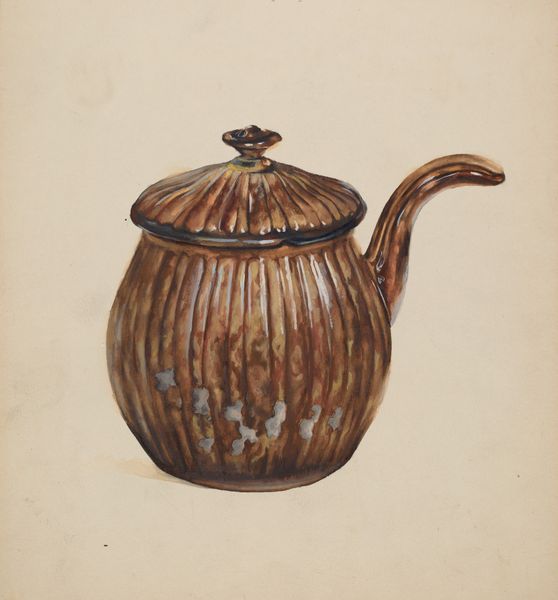
drawing, watercolor
#
drawing
#
figuration
#
oil painting
#
watercolor
#
watercolour illustration
#
watercolor
#
realism
Dimensions: overall: 33 x 32.9 cm (13 x 12 15/16 in.)
Copyright: National Gallery of Art: CC0 1.0
Editor: This is Samuel W. Ford's "Copper Kettle," a watercolor from around 1939. It's a striking, realistic depiction of a common household object, yet there’s something almost…monumental about the way it’s presented. What do you see in this piece, beyond just a simple kettle? Curator: It's precisely that "monumental" feeling we need to unpack. While seemingly mundane, objects like this kettle, particularly during the Depression era, can symbolize resilience and domesticity in the face of economic hardship. Who do you think this kettle belonged to? Does the inscription on it hint at this? Editor: There's some text inscribed on it… names and dates. Is the act of immortalizing the names of the people associated to the object within the work a common practice at the time? Curator: The act of inscription transforms a functional item into a historical artifact, linking it to a specific lineage, in this case the names “Elizabeth Cape” followed by others associated with the last name “Greene”. It raises questions about women's roles within the home and how these objects were passed down, embodying family histories. Ford presents this as a cultural artifact and offers, subtly, the possibility to explore stories. It seems very deliberately chosen by the artist, would you agree? Editor: Absolutely, the kettle seems to act as a portrait itself. Thinking about the Depression era, the painting has undertones of longing. The work also evokes a nostalgic yearning for simpler times, perhaps. Curator: Yes! And remember that realism in art during this period also had political implications. It spoke to the lives of ordinary people and brought visibility to their experiences. Is Ford celebrating the American home as a site of solace, even quiet resistance? Editor: I never thought about it that way! It makes me see the kettle not just as an object, but as a silent witness to history. Curator: Exactly. The artwork now acts as a vehicle to understand larger sociopolitical landscapes and the individual identities intertwined with it.
Comments
No comments
Be the first to comment and join the conversation on the ultimate creative platform.
